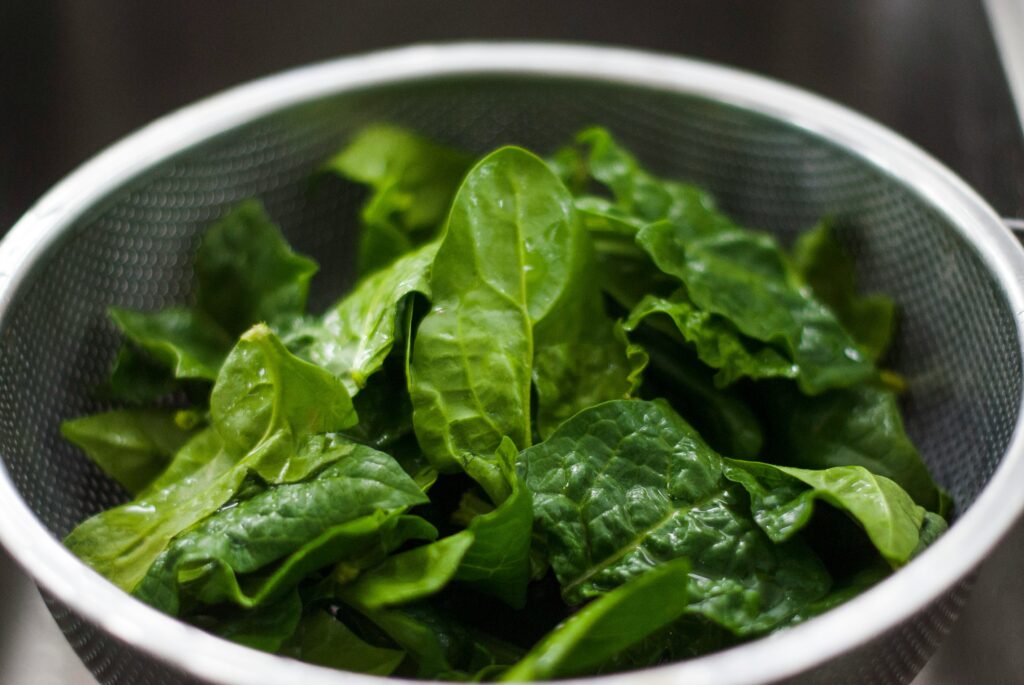We’ve long been told to “eat our greens,” and spinach has always been a shining star on the healthy-eating stage. It’s in our salads, our smoothies, our omelets, and even our chips. Packed with iron, fiber, folate, and essential vitamins like A and C, spinach is often crowned a “superfood.” But what if this leafy green darling is hiding a dirty secret?
Here’s a startling truth: spinach is one of the most pesticide-contaminated vegetables in the United States. Year after year, it ranks high on the Environmental Working Group’s “Dirty Dozen” list, which identifies the produce items most likely to carry pesticide residues. It’s not just a matter of a few trace amounts either—some samples tested have been found with up to 13 different pesticide residues on a single leaf.
That’s not something you can ignore, especially if you’re trying to eat clean and live healthier. So, should you toss out the spinach in your fridge right now? Not necessarily. But you do need to know what you’re consuming and how to make smarter choices.
How Serious Is the Spinach Problem?

The real issue isn’t that spinach contains a pesticide—it’s that it frequently contains multiple pesticides, often at levels that raise concerns among experts. One of the most troubling culprits found in tests is permethrin, a neurotoxic insecticide that has been banned or restricted in several countries due to its potential to affect brain development, especially in children.
While the levels found on spinach in U.S. grocery stores are legally considered “safe,” it’s important to understand that these safety thresholds often evaluate one chemical at a time. In reality, consumers are exposed to a cocktail of chemicals—each with its own effects, and possibly interacting in unpredictable ways. The long-term health implications of chronic, low-dose exposure to multiple pesticides are not fully understood, but some studies suggest potential links to hormonal disruption, cognitive decline, and even increased cancer risk.
Adding to the problem is the way spinach is grown and processed. As a delicate leafy green, spinach is especially vulnerable to pests and disease, so it’s treated heavily during farming. Moreover, since spinach leaves are thin and absorbent, they can soak up pesticides easily. Unlike thicker produce with peels—like oranges or bananas—there’s no way to remove these chemicals completely just by rinsing.
How to Enjoy Spinach More Safely
The good news? You don’t need to cut spinach out of your diet. But you do need to be more conscious about where it comes from and how you consume it. Here are some smart strategies to reduce your exposure to harmful residues:
1. Go Organic Whenever Possible
Organic spinach is grown without synthetic pesticides, herbicides, or genetically modified organisms. While it’s not guaranteed to be 100% residue-free, it’s by far the safer option. If spinach is a staple in your kitchen, consider making this one of the items you always buy organic.
2. Wash Thoroughly — But Manage Expectations
Give your spinach a thorough rinse under cold running water for at least 20 seconds. You can also soak it briefly in a vinegar-water solution, which may help reduce some residues. However, it’s important to understand that washing won’t eliminate chemicals that have penetrated into the leaf tissue.
3. Switch It Up
Spinach isn’t the only green that’s good for you. Kale, Swiss chard, arugula, romaine, and watercress offer similar nutritional benefits—and some of them have lower pesticide levels. Rotating your greens not only lowers your chemical exposure but also diversifies the nutrients you get from your meals.
4. Choose Frozen Wisely
Frozen spinach is usually blanched before freezing, which may help reduce pesticide levels to some extent. However, the key is checking the source. Look for organic frozen options, and read labels carefully to avoid unwanted additives.
5. Shop Seasonally and Locally
Produce that travels less distance tends to require fewer preservatives and chemicals to keep it fresh. Shopping at your local farmers’ market—or joining a community-supported agriculture (CSA) program—can help you find fresher, more responsibly grown spinach.
Why Spinach Still Matters
Despite these concerns, spinach remains a powerful part of a healthy diet. It’s low in calories and high in nutrients that support everything from eye health to immune function. Its antioxidants help combat inflammation and cellular damage, and its high iron content is especially valuable for those following plant-based diets.
Rather than fearing spinach, we should aim to better understand it. The conversation isn’t about demonizing a vegetable—it’s about demanding safer, cleaner food systems and making choices that align with both our health and our values.
We live in a world where nearly all food comes with trade-offs. Even organic produce isn’t immune from contamination through soil or water runoff. But when you know better, you can eat better. Knowledge empowers us to take control of our plates, from the farm all the way to the fork.
The Bottom Leaf
So, is spinach still worthy of its superfood status? Absolutely—but only if you treat it with a little more intention. Choosing organic, washing thoroughly, and rotating your greens are simple steps that can significantly reduce your pesticide exposure without forcing you to give up your favorite leafy vegetable.
America’s most popular veggie doesn’t have to be the dirtiest one on your plate. With just a bit more awareness, you can enjoy all the benefits of spinach—without the unwanted chemicals hiding in every bite.
Leave a comment